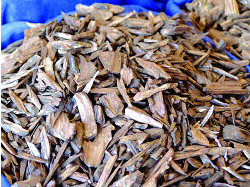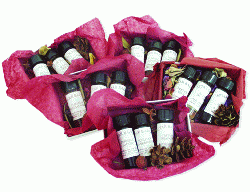Archives
Eastern Panorama Fellowship-The Magic of Aloe:From Ancient manuscripts to Fragrant Attar
Assam, one of the ‘Seven Sister States’ of the North East, has the privilege of having used this particular tree from time immemorial in a way which is still a wonder in this era of scientific development.It is really an enigma for any outsider to know about India’s North East which was veiled and mysterious. Very little was known about the region before the advent of the British colonists in the first half of the 18th century. The ‘Seven Sisters’ consisting of Arunachal Pradesh, Assam, Manipur, Meghalaya, Mizoram, Nagaland, Sikkim and Tripura has been a beautiful expression of nature’s bounty. The region has a variegated physical feature, snow clad mountains, undulating hills, dense verdant forests, sparkling streams, mighty rivers, cascading waterfalls, beautiful gorges and bouncing dales, giving the beholders a feeling of living amidst nature’s scenic beauty. The strategic importance of the region along with the sensitive geopolitical location, extremely diverse nature of its culture and population with various linguistic, religious and historical backgrounds make this region unique in its own kind. Its topography and historical backgrounds have not only contributed to the heterogeneous character of the region, but have also prevented the emergence of a homogeneous culture. Assam which is one of these ‘Seven Sisters’ of the North East, also has some unique traditions which do not exist in any other part of the globe.
Blessed by the mighty Brahmaputra, Assam with its vast alluvial plain, rich in forests and rolling tracks of paddy and tea, is one of the highest timber producers of the country. Assam’s forests are full of potential, rich in flora and fauna. Assam has an age old tradition of using trees, herbs, etc. for various purposes. The use of the Aloe tree, with its special features, is along the lines of carrying the knowledge, wisdom and experiences of the people’s ancestors. In Assam, this plant has had significance from ancient times and this significance has lived on till present times. Assam has been getting the charm of Aloe in two ways – in the pristine beauty of the ancient manuscripts, the sanchipat and now, in the sublime fragrance of Aloe oil or the attar.
About the Aloe Tree
The tree is a large to medium evergreen of 15 to 20 m high, sometimes growing up to 40 m high as is found in Barak Valley, 1.5 to 2.5 m in girth with a moderately straight and often fluted stem. The leaves are about 5 to 9 cms long, thinly cariaceous, oblong lanceolate; and the colour of the flowers is white or green to dirty yellow in terminal, sessile or shortly peduncled umbellate cymes.
 The tree regenerates freely through seeds. It needs a high humid, sub tropical climate with rainfall of 1800 to 3500 mm per annum. It grows from sea level up to 500 m altitudes. It is a sun – loving plant and requires a lot of sunshine. It thrives on well drained deep sandy loam to loam rich in organic matter but can also be grown in marginal soil and also in shallow soil over rocky beds with cracks and crevices. It grows well in hill slopes and forest environments. The traditional Aloe growing area shows that it also prefers acidic soil reaction. The acidic soil helps the fungus that is essential for the tree to produce the oil.
The tree regenerates freely through seeds. It needs a high humid, sub tropical climate with rainfall of 1800 to 3500 mm per annum. It grows from sea level up to 500 m altitudes. It is a sun – loving plant and requires a lot of sunshine. It thrives on well drained deep sandy loam to loam rich in organic matter but can also be grown in marginal soil and also in shallow soil over rocky beds with cracks and crevices. It grows well in hill slopes and forest environments. The traditional Aloe growing area shows that it also prefers acidic soil reaction. The acidic soil helps the fungus that is essential for the tree to produce the oil.
One Tree – Many Names
Agar wood is one of the precious gifts of nature to mankind; its sweet, majestic fragrance has no parallel in the world. It is known as Agaru or Sanchigauch in Assamese, Agar (a Sanskrit based word) in Hindi, Chen – Xiang in Chinese and Jin – Kih in Japanese, both meaning ‘sinking incense’ and alluding to its high density; Oud in Arabic, Gaharu in Indonesian and Malay, Ghara in New Guinea, Tram huong in Vietnamese, Mai Kritsana in Thai. There is ample mention of Aloe in the pages of history. The use  of Aloe is prehistoric. There is mention in the Bible of the aromatic aloe wood. There is also mention of the use of Aloe wood in Paradise as incense in the famous book Ahadith – Sahi Al – Bukhari. Aloe also holds a prominent place in the travel stories on ancient Kamrup written by the pilgrim Hiuen – Tseng of China, besides earning a mention in Abhijnanmam Shakuntalam of Kalidasa and Arthashastra of Chanakya, the legal adviser of the Maurya dynasty in ancient India.
of Aloe is prehistoric. There is mention in the Bible of the aromatic aloe wood. There is also mention of the use of Aloe wood in Paradise as incense in the famous book Ahadith – Sahi Al – Bukhari. Aloe also holds a prominent place in the travel stories on ancient Kamrup written by the pilgrim Hiuen – Tseng of China, besides earning a mention in Abhijnanmam Shakuntalam of Kalidasa and Arthashastra of Chanakya, the legal adviser of the Maurya dynasty in ancient India.
The Nowgong grant of Balavarman gives a graphic description of Pragjyotishanagara (capital of Kamrupa, the ancient Assam) where areca nuts are wrapped in leaves of creeper of betel – plants and Krishnaguru (Telegu for Agar wood) or black aloe wood trees which were surrounded by cardamom creepers. It is also recorded that after conquering the last king Gaur Gobind in 1348 AD in Sylhet, Saint Fakir Ali Shah Jalal and his followers found Agar wood and agar attar along with many other valuables in the royal store. This clearly indicates that distillation of agar oil was done as far back as the 13th century or even much earlier. Abul Fazar Allami in his Ain – I – Akbari (memoirs of Emperor Akbar) written in 1590 AD gives a vivid description of agar wood and agar oil along with their manufacturing process and uses. It is also said that the Mughals invaded Assam mainly for aloe wood. Such was the lure of it!
The people of Assam used to make sanchipat from the inner bark of the Aloe tree for writing purposes in a very unique way. nchipat
Eastern Panorama Fellowship -The Magic of Aloe
-
Ancient Treasure
The use of agar wood in Assam, as history tells us, is from the 7th century. The first historical biography in Sanskrit – the ‘Harsha Charita’, written by Bana in 625 A.D states that among the many gifts by Bhaskarvarma, king of Kamrupa, to Harshavardhana, king of northern India, there were ‘volumes of fine writing with leaves made from aloe bark
 and the hue of ripe cucumber,” and also black aloe oil. It is said that the Greeks were also aware of the making of the ancient manuscripts called sanchipat in Assam. The great Vaisnavaite Guru, Shreemanta Shankardev who was a pioneer in shaping Assam’s rich cultural heritage, extensively used sanchipats and thus spread knowledge to the common people. In producing these great pieces of art, it was he who is considered as the torch bearer of this amazing, beautiful craft.
and the hue of ripe cucumber,” and also black aloe oil. It is said that the Greeks were also aware of the making of the ancient manuscripts called sanchipat in Assam. The great Vaisnavaite Guru, Shreemanta Shankardev who was a pioneer in shaping Assam’s rich cultural heritage, extensively used sanchipats and thus spread knowledge to the common people. In producing these great pieces of art, it was he who is considered as the torch bearer of this amazing, beautiful craft. It is really a wonder to know how manuscripts were produced. The preparation of the manuscripts by the ancient people of Assam was done through a very long, complex and intricate method. In the book ‘A History of Assam’, historian Sir Edward Gait describes the craft of making manuscripts in Assam as follows: “A tree is selected of about 15 to 16 years growth and 30 to 50 inches in girth. From this, the bark is removed in strips. The strips are rolled up separately and are dried in the sun for several days. They are then rubbed on some other hard surface so as to remove the outer portion of the bark. After this, they are exposed to the dew for one night. Next morning, the outer layer of the bark (nikari) is carefully removed and the bark proper is cut into pieces. These are put into cold water for about an hour and the alkalai is extracted, after which the surface is scraped smooth with a knife. They are often dried in the sun for half an hour and when perfectly dry are rubbed with a piece of burnt brick. A paste prepared from matimah (Phaseous raditus) is next rubbed in and the bark is dried yellow by means of yellow arsenic. This is followed again by sun drying, after which the strips are rubbed as smooth as marble. The process is now complete and the strips are ready for use.”
 There were several persons in the society who used to make sanchipat. Of all these persons, there were khanikars who made ready the formats of horizontal folios of various sizes to write therein. There are some measuring sticks to measure the sizes of the folios. One of the sticks was used to measure the margins on all sides called kan – jokta – kathi as it was used to specify the margin called kan. There is also another stick known locally as katar – kathi i.e. antler – stick because of its resemblance in shape to antlers. It is used for the allocation of equal space for each line. With regard to the mode of writing, it is said that the scribe should maintain uniformity with spacious adjustment. This results in better calligraphy in which letters always appear symmetrical. Besides this calligraphic beauty, the manuscripts are also embellished with picaresque paintings.
There were several persons in the society who used to make sanchipat. Of all these persons, there were khanikars who made ready the formats of horizontal folios of various sizes to write therein. There are some measuring sticks to measure the sizes of the folios. One of the sticks was used to measure the margins on all sides called kan – jokta – kathi as it was used to specify the margin called kan. There is also another stick known locally as katar – kathi i.e. antler – stick because of its resemblance in shape to antlers. It is used for the allocation of equal space for each line. With regard to the mode of writing, it is said that the scribe should maintain uniformity with spacious adjustment. This results in better calligraphy in which letters always appear symmetrical. Besides this calligraphic beauty, the manuscripts are also embellished with picaresque paintings.The paintings in the manuscripts symbolise an artistic expression of sublime knowledge of Geeta, Puran etc. Now, how the ink and the colour of these paintings are prepared is another fascinating story.
Pages That Defy Time
The greatest wonder that today’s man sees in the sanchipat is its long durability. In the case of the sanchipat, the paintings and letters in the manuscripts last for many years. To produce an ink and a fine surface with the durability to fight the decay of time, the artisans produce an organic dye by mixing various herbs.
The surface of the bark is painted with the help of an organic dye locally called hengool. The edges of the paper pieces are painted with another organic dye known as haital. After two or three days, the material turns grey or pale yellow and becomes resistant to insects. The writing on these strips is done with a sharp pointed implement. Pigment is then rubbed into the finely incised lines to make them visible. The barks are drilled with holes and bound with cords in the centre of the leaf, traditionally often ornamented and threaded with a string or nadi. These barks are usually kept in piles.
The Majestic Fragrance
Known as ‘Otto of Roses’, the attar or agar oil is universally acclaimed and is a highly valued fragrant oil. It is a highly sought after commodity. Earlier, the oil was exported to the Middle East by Chinese traders through the Silk Route. Now, it is exported to West Asia from different parts of Assam like Nagaon, etc.
Its Manifold Uses
Agar’s aromatic bark is used as incense sticks in many homes.
 Its product agar oil is used as a base in the perfume industry all over the world.
Its product agar oil is used as a base in the perfume industry all over the world. In the ancient tradition of medicine making, it is used in a large number of Unani and Ayurvedic medicines. Interestingly, agar is also used to flavour common and widely used betel nut preparations.
From the economical point of view, the aloe tree carries massive importance. Now, there are many families who earn their livelihood through this tree. Though Assam’s humid climate is not a favourable condition for the aloe tree, it can be produced here for commercial purposes to some extent considering its significance in the market.
Shivajyoti Das Baruah, Mass Com. Dept, Gauhati University.

